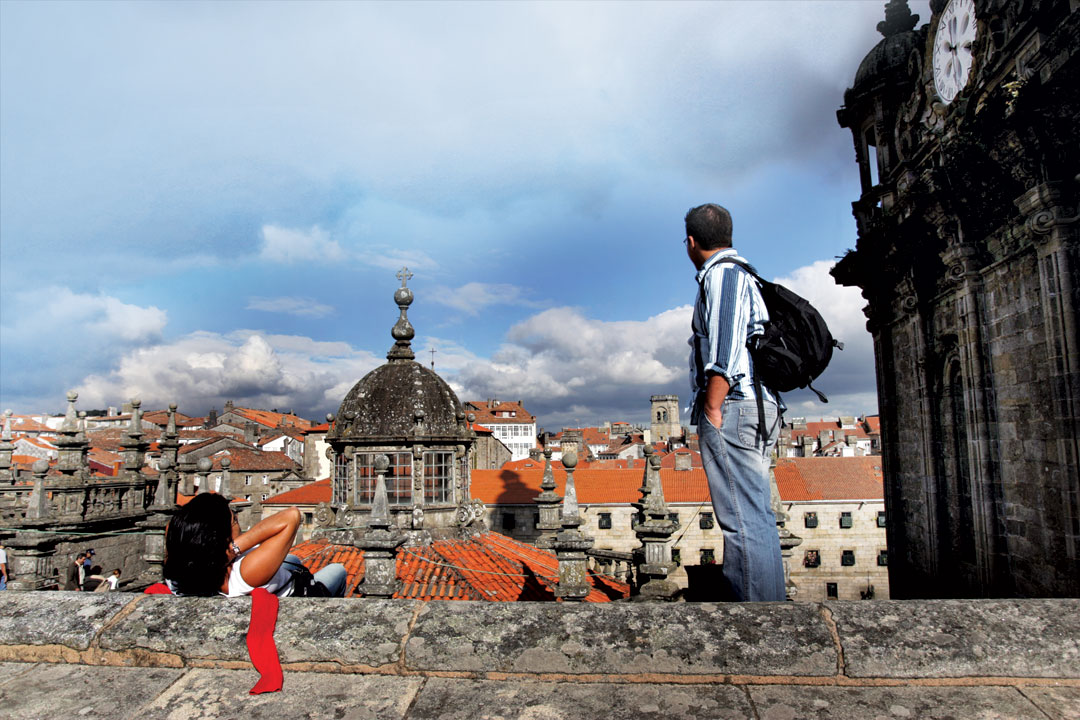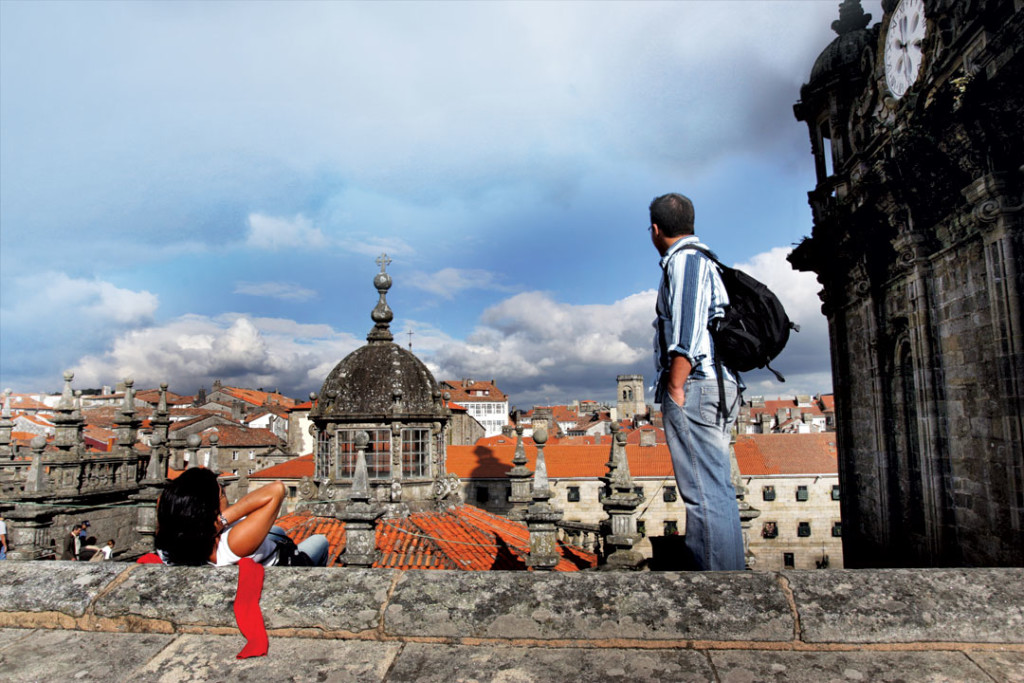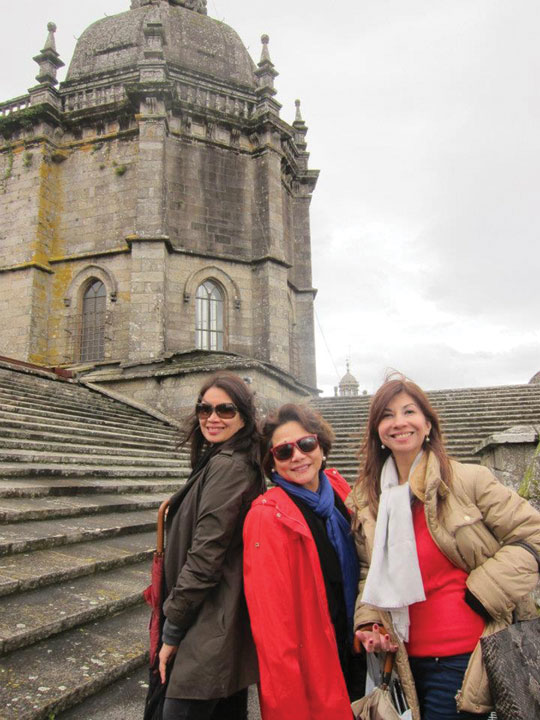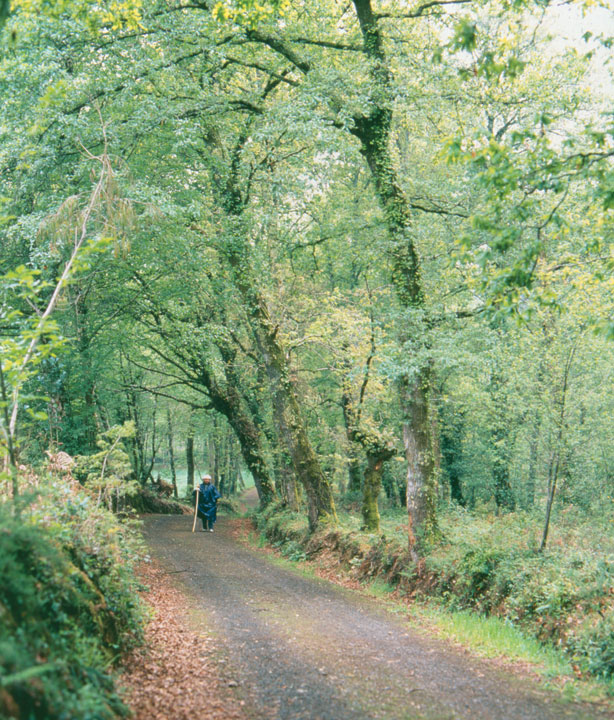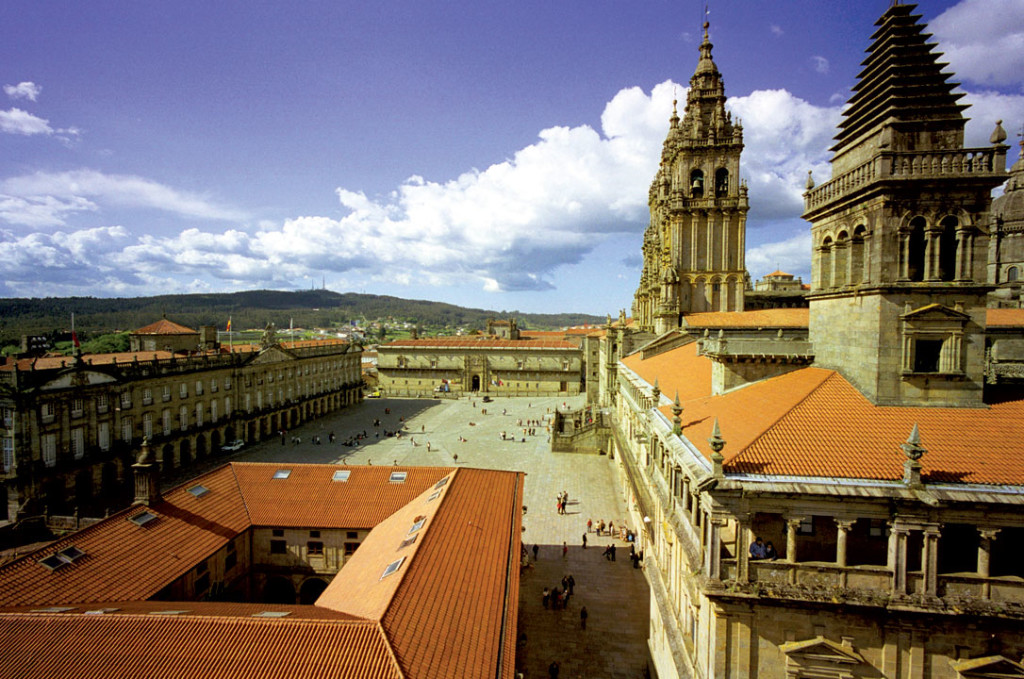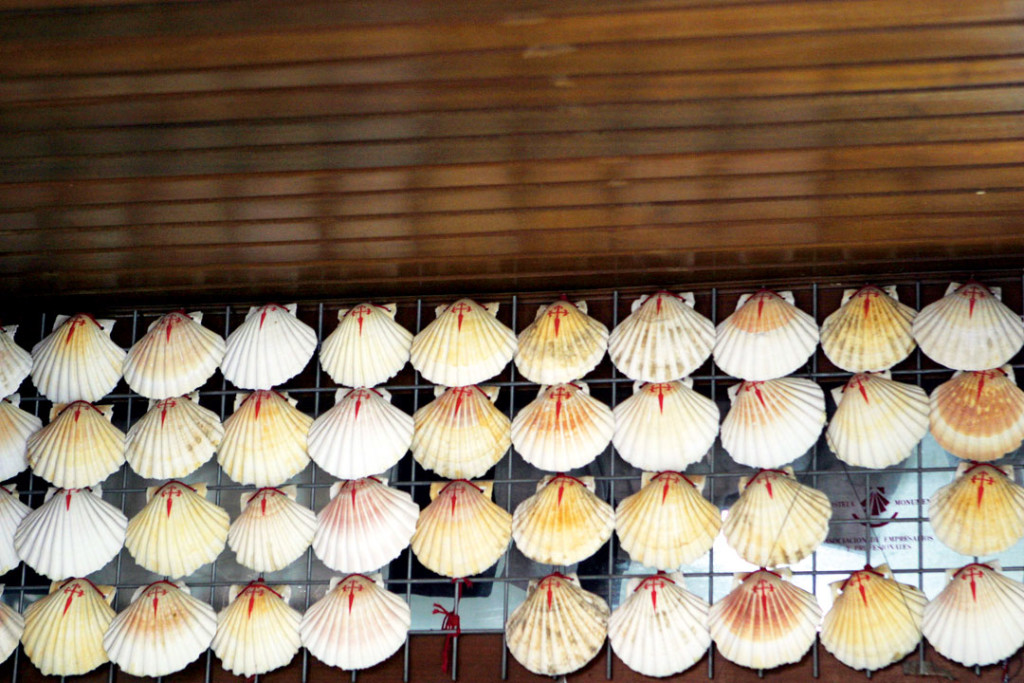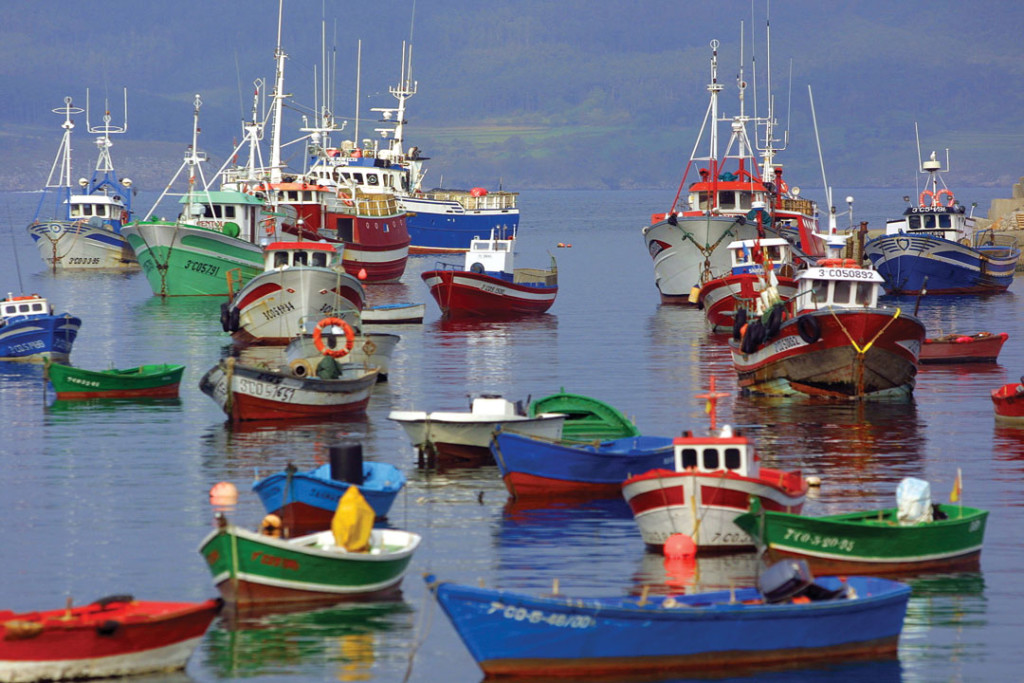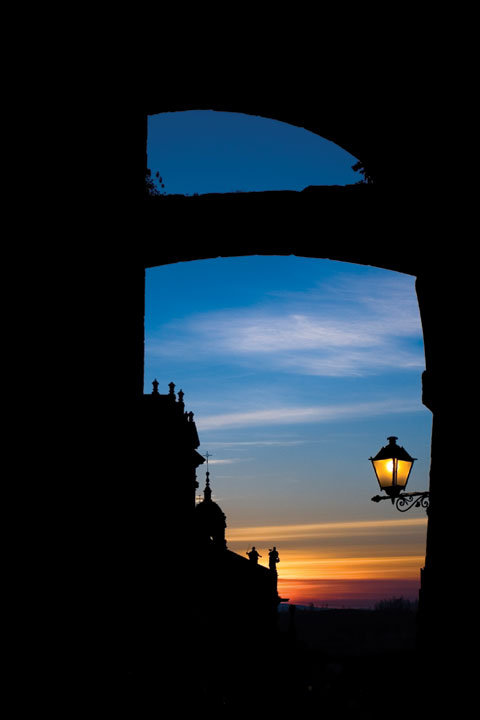Text by JOANNE RAE RAMIREZ
Photos courtesy of TURISMO DE SANTIAGO DE COMPOSTELA
Santiago de Compostela in northwest Spain is both a destination and a journey, a tourist spot and a spiritual beacon, a city of architectural marvels and edifices of faith.
(Two pilgrims admire the breathtaking view from the rooftop of the 11th-century Santiago de Compostela cathedral in Northwest Spain)
For those who seek spiritual invigoration and inner peace, Santiago de Compostela is synonymous with the Way of St. James, a walking pilgrimage that culminates in the awe-inspiring 11th-century Santiago de Compostela Cathedral. The pilgrimage may last months, weeks or days, depending on the route you choose. For those who have experienced it, the pilgrimage usually ends on bended knees in praise and thanksgiving.
For those who seek the high of being in a place whose sheer architecture is already a monument of praise to an omniscient Being, then Santiago de Compostela is synonymous with its Cathedral. It is renowned for the majesty of its tiled rooftop and its extraordinary Botafumiero, a 62-kilogram incense burner swung virtually from end to end of the cathedral on certain days.
A charming Medieval city in the region of Galicia, Santiago de Compostela is a UNESCO World Heritage City, and the Way of St. James has also been declared a World Heritage Site.
Though inarguably a destination of faith, Santiago, 47 minutes by plane from the capital Madrid, and an hour and 15 minutes from Barcelona, has other unforgettable attractions. The city is touted as the capital of Atlantic gastronomy.
Galicia is the second largest producer of mussels in the world (after China). It is thus not surprising that Santiago and nearby cities in the region are home to 1,100 restaurants serving the most delectable seafood dishes. Several restaurants, like Yayo Daporta and Pepe Solla, are Michelin-rated.
(FROM LEFT: Conquering the cathedral’s roof are travel agents Shan David and Marget Villerica, the author)
If there’s a will, there’s…
St. James’ Way. They say a pilgrim has to undergo some form of physical hardship as part of his spiritual voyage. The Way of St. James, if you are to adhere strictly to it, means walking continuously for 10, 20 or 30 days. This means bringing only the most essential of things on your journey, which, pilgrims say, remind them of the essentials in life’s journey as well.
One of the routes begins in St. Jean-Pied-du-Port near Biarritz in France and ends at the tomb of St. James (Santiago in Spanish) in Santiago de Compostela in northwest Spain, 780 kilometers (nearly 500 miles) away. There are other routes that originate in Spain, like in Montserrat near Barcelona.
The pilgrimage dates back to the early 9th century when the sepulcher of the St. James, the apostle who preached the Gospel in the Iberian Peninsula, was discovered. After this discovery, Santiago de Compostela became a destination for pilgrims all over Europe, especially after Archbishop Xelmirez won the right in the 12th century to grant plenary indulgence to pilgrims, in the same way that indulgences are granted to pilgrims to Rome or Jerusalem.
You earn a compostela (an accreditation) if you travel the last 100 kilometers of your journey on foot or the last 200 kilometers by bicycle or horseback. According to the Santiago de Compostela pilgrimage office, some 270,000 pilgrims and 3.7 million visitors stepped into the threshold of the Cathedral in 2010.
(A pilgrim embarks on the Way of st. James, which culminates at the cathedral)
A spiritual ‘high’
You get a high, literally and figuratively, when you visit the 11th century Cathedral of Santiago de Compostela, the biggest and most outstanding edifice of Romanesque art in Spain.
The Cathedral was once a chapel, built to honor the remains of St. James, who was executed in Jerusalem in 44 AD. After his relics were discovered in the 9th century, a chapel was erected on the site where they were found.
In the 12th century, architect Mateo added his Portico de la Gloria, a sculptural masterpiece that relates the Story of Salvation with more than 200 figures. It is the arch you see when you ascend the front steps of the Cathedral, which was consecrated in the 14th century.
The Cathedral’s granite facade, the Obradoiro Facade, is Baroque art at its most magnificent: dramatic and rich, in the tradition of the Italian sculptor Bernini. With 74-meter high towers facing the city, the Obradoiro Facade is one of the city’s most photographed landmarks. Walking up the square leading to the Cathedral, one beholds such a magnificent edifice. It almost looks like a fortress, except that instead of rocks, it has holy images.
The Cathedral has about 18 chapels, most visited of which is the one with the statue of St. James, whose back pilgrims and visitors embrace. Before you reach the statue, you must ascend a steep flight of stone steps. Below the altar is the tomb of St. James and his two disciples.
(Something short of a miracle happened to me in the alcove with the statue of St. James. As I took the photo of a dear friend who was embracing the statue, I took a few steps backward in order to get a better angle of the rare photo-op. I didn’t realize I was at the edge of the landing and had stepped back into virtual thin air. Just before I could fall down the heavy stone steps to life everlasting, a pair of strong arms lifted me and set me upright. Up to now, I do not know to whom those arms belonged).
The Cathedral is also famed for its Botafumeiro, a giant censer used since the Middle Ages to purify the air. According to Galician folklore, the Botafumeiro, was needed because of the smell emitted by thousands of unwashed pilgrims. Eight men are needed to operate the contraption that releases the Botafumeiro. Nowadays, it is still used on certain days of the year inside the Cathedral, more for drama than as deodorizer!
The most dramatic part of the Cathedral, the one that sets it apart from other jaw-dropping places of worship in Europe, is its roof. According to some accounts, pilgrims used to burn their clothes on the roof of the cathedral at the end of their journey.
The steep tiled granite rooftop, 30 meters above the square, is not just the cathedral’s cover. It is like an intricate piece of sculpture mounted on top of the church, like gray icing over a multi-tiered cake. Entrance fees are charged for those who want to visit the roof, which one reaches after climbing several flights of stone steps from a side entrance.
On the roof, with the blue sky as your only canopy, you behold not only the beautiful city of Santiago de Compostela, but the wonders of faith. Faith built this granite masterpiece and whether you visit it to ogle or to pray, or both, you will leave the Cathedral of Santiago de Compostela with a high.
Editor’s note: This article was originally published in PeopleAsia‘s August-September 2012 issue.
(Denise Tan of the Spain Tourism Board)
(Singapore Airlines’ Rita Dy)
(The clamshell is a symbol of Santiago de Compostela in Galicia, one of the world’s most prolific shellfish producers)
(Santiago is in the region of Galicia, which is bound by the Atlantic ocean on one side)
(The town square at night)
(The Baroque Obradoiro facade of the cathedral all aglow. Note the Portico de Gloria at the entrance)

